.
6.04.2016
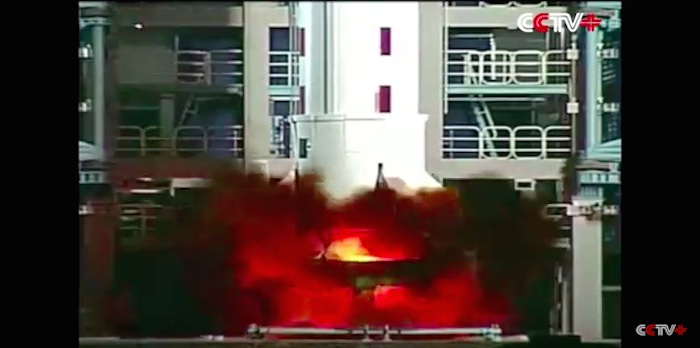
China put into space a retrievable scientific research satellite in the early hours of Wednesday in a fresh bid to aid scientists on Earth in studying microgravity and space life science.
In a cloud of brown smoke, the satellite, SJ-10, roared into the air on the back of a Long March 2-D rocket from the Jiuquan Satellite Launch Center in northwestern China's gobi desert.
"Today's launch of SJ-10 satellite is successful. Then work of the next phase will be carries out progressively. During its operation, the satellite will house 28 scientific experiments, including 10 in the field of life sciences. Then it will returns on Earth," said Hu Wenrui, chief scientist of the SJ-10 mission.
All experiments conducted on SJ-10 are completely new ones that have never been done before either at home or abroad, and could lead to key breakthroughs in academic research, Hu said.
The experiments will involve microgravity fluid physics, microgravity combustion, space material, space radiation effect, microgravity biological effect and space bio-technology.
On-board experiments were selected from a pool of over 200 applicants.
They include one that will study early-stage development of mouse embryos in microgravity to shed light on human reproduction in space, and another studying space radiation effects on genetic stability of fruit flies and rat cells.
A "Soret Coefficient in Crude Oil" experiment in partnership between the National Space Science Center under Chinese Academy of Sciences (CAS) and the European Space Agency (ESA) is also onboard together with an investigation of coal combustion and pollutant formation under microgravity. The former test is aimed to improve scientists' understanding of oil reservoirs buried kilometers underground, while the latter is expected to help enhance energy efficiency and cut emissions.
SJ-10 is the second of four scientific satellites under a CAS space program. Unlike the other three, SJ-10 is returnable. It is the 25th such retrievable satellite launched by China in the past decades.
Overall, eight of the experiments on fluid physics and microgravity combustion will be carried out in the orbital module and the others in the re-entry capsule which is expected to land at Siziwang Banner in Inner Mongolia, the designated landing spot for China's Shenzhou manned space missions and a 2014 test lunar orbiter.
.
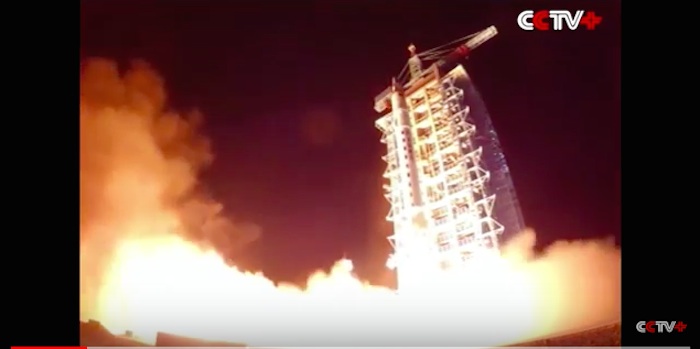
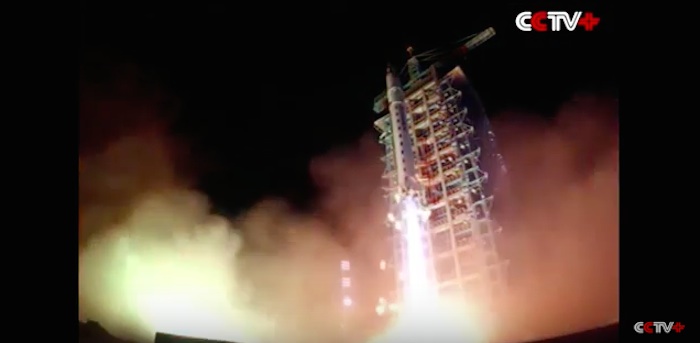
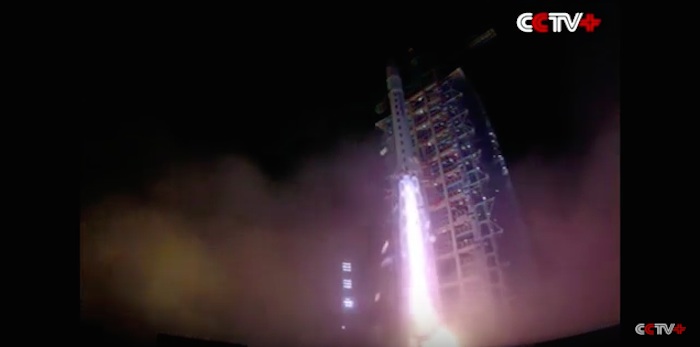
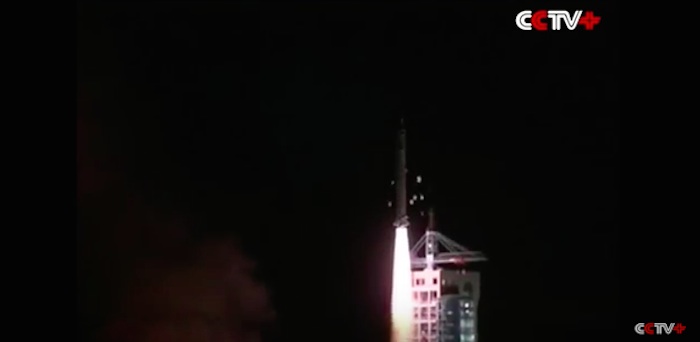
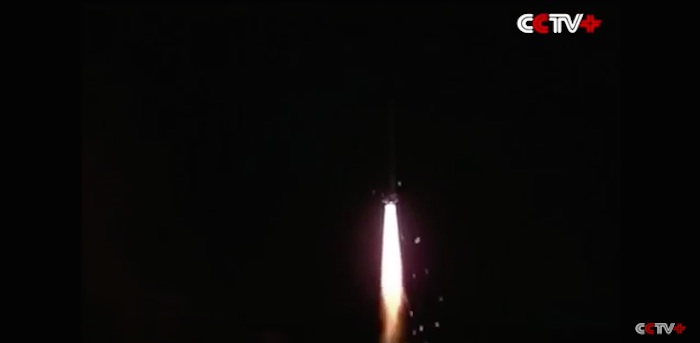
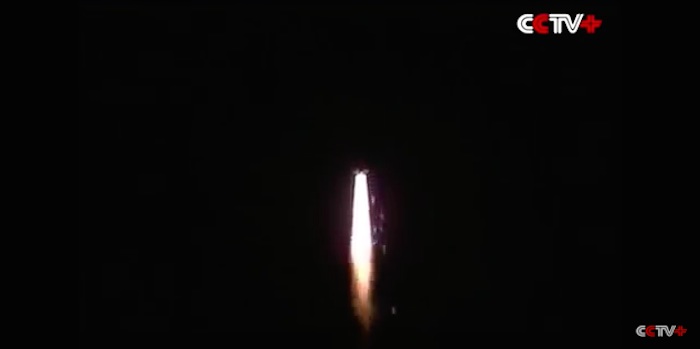
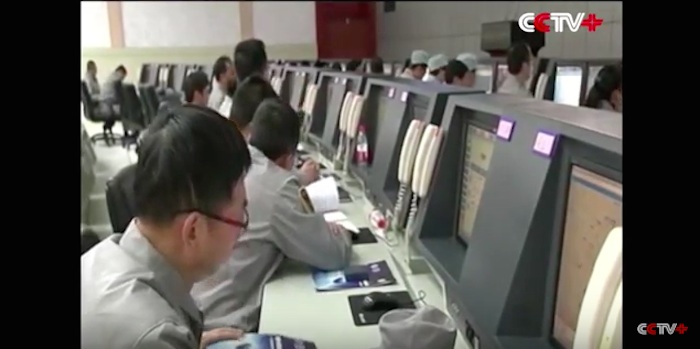

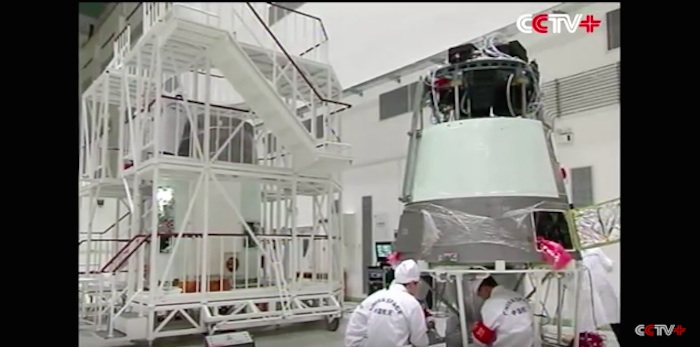
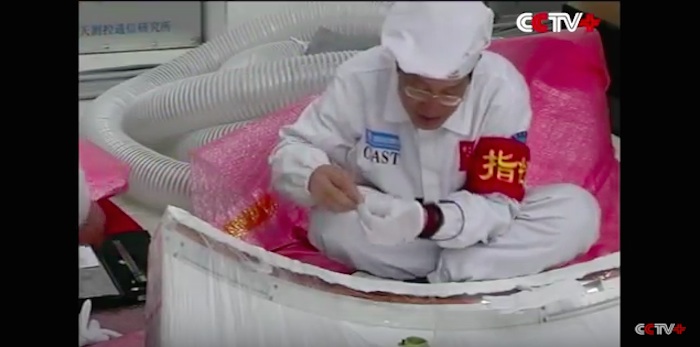
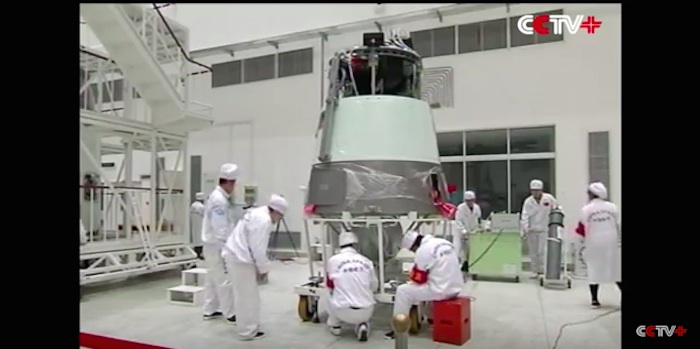
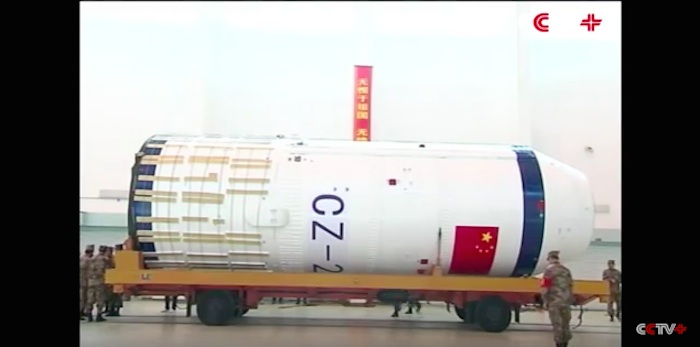
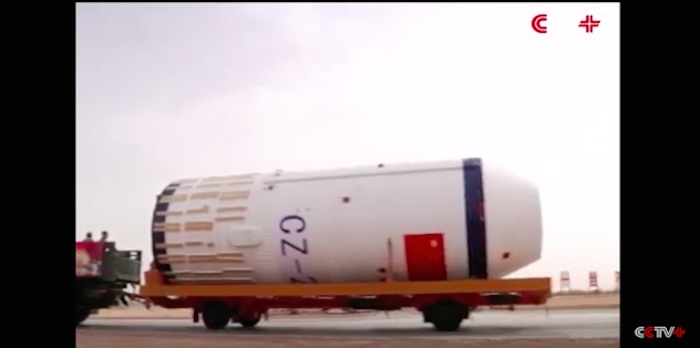
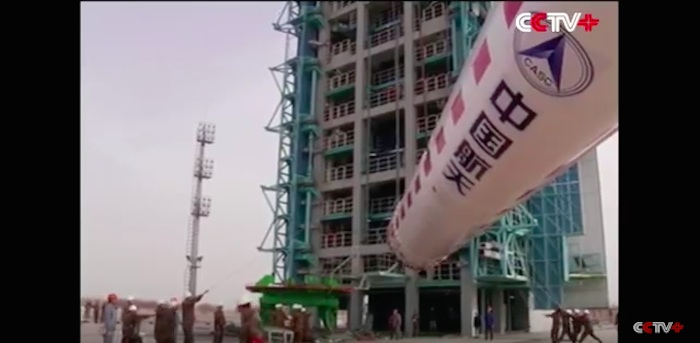
Quelle: CCTV
-
Update:
.
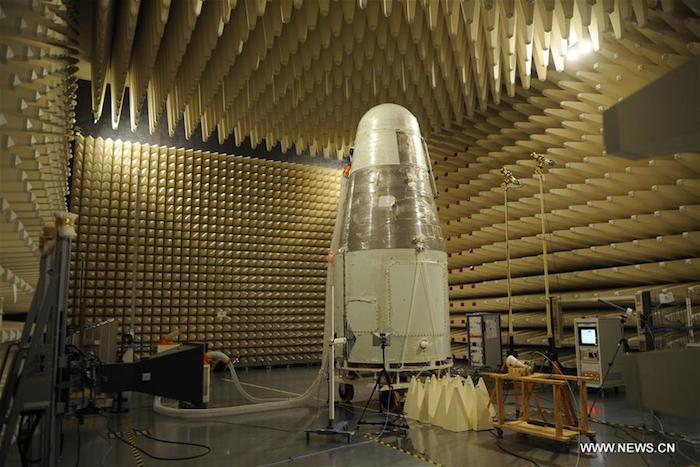
JIUQUAN, April 6, 2016 (Xinhua) -- Photo provided by the Chinese Academy of Sciences, taken on Sept. 8, 2015 shows the SJ-10 Satellite under experiment. China put into space a retrievable scientific research satellite SJ-10 in the early hours of Wednesday in a fresh bid to aid scientists back on Earth in studying microgravity and space life science. (Xinhua/Chinese Academy of Sciences)
China put into space a retrievable scientific research satellite in the early hours of Wednesday in a fresh bid to aid scientists back on Earth in studying microgravity and space life science.
In a cloud of brown smoke, the satellite, SJ-10, roared into the air on the back of a Long March 2-D rocket from the Jiuquan Satellite Launch Center in northwestern China's gobi desert.
While in space, the bullet-shaped probe will house 19 experiments involving microgravity fluid physics, microgravity combustion, space material, space radiation effect, microgravity biological effect and space bio-technology, before coming back to Earth with results.
On-board experiments were selected from a pool of over 200 applicants.
They include one that will study early-stage development of mouse embryos in microgravity to shed light on human reproduction in space, and another studying space radiation effects on genetic stability of fruit flies and rat cells.
A "Soret Coefficient in Crude Oil" experiment in partnership between the National Space Science Center under CAS and the European Space Agency (ESA) is also onboard together with an investigation of coal combustion and pollutant formation under microgravity. The former test is aimed to improve scientists' understanding of oil reservoirs buried kilometers underground, while the latter is expected to help enhance energy efficiency and cut emissions.
"All experiments conducted on SJ-10 are completely new ones that have never been done before either at home or abroad," said Hu Wenrui, chief scientist of the SJ-10 mission.
"They could lead to key breakthroughs in our academic research," Hu said.
SJ-10 is the second of four scientific satellites under a CAS space program. Unlike the other three, SJ-10 is returnable. It is the 25th such retrievable satellite launched by China in the past decades.
Overall, eight of the experiments on fluid physics and microgravity combustion will be carried out in the orbital module and the others in the re-entry capsule which is expected to land at Siziwang Banner in Inner Mongolia, the designated landing spot for China's Shenzhou manned space missions and a 2014 test lunar orbiter.
Quelle: Xinhua
-
Update: 18.04.2016
.
Chinese scientists develop mammal embryos in space for first time
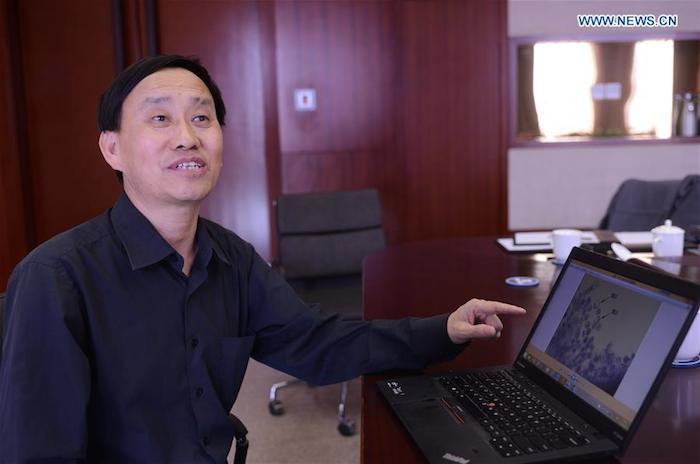
Duan Enkui, researcher of the Institute of Zoology, Chinese Academy of Sciences, and also the leader of the project, introduces the development of the mammal embryos in space in Ulanqab City, north China's Inner Mongolia Autonomous Region, April 17, 2016. Over 6,000 early-stage mouse embryos carried by China's retrievable scientific research satellite have developed in space, making it the world's first-ever successful test on mammal embryo development. (Xinhua/Wang Quanchao)
.
Chinese scientists on Sunday said they have successfully developed early-stage mouse embryos in space for the first time on a retrievable microgravity satellite set to return to Earth sometime next week.
The SJ-10 research probe, launched on April 6, carried over 6,000 mouse embryos in a self-sufficient chamber the size of a microwave oven, according to Duan Enkui, a researcher with the Chinese Academy of Sciences (CAS).
Among them, 600 embryos were put under a high-resolution camera, which took pictures every four hours for four days and sent them back to Earth.
The pictures showed that the embryos developed from the 2-cell stage, an early-on embryonic cleavage stage, to blastocyst, the stage where noticeable cell differentiation occurs, around 72 hours after SJ-10's launch, Duan said. The timing was largely in line with embryonic development on Earth, he added.
The rest of the embryos loaded on the satellite were injected with fixatives at 72 hours after the launch for studies on the effects of space environment on embryonic development, according to Duan.
This is the first reported successful development in mammalian embryos in space in human history.
Scientists will compare the retrieved embryos with samples on Earth and perform further analyses on the profiles of early embryo development in space, once SJ-10 returns home.
SJ-10 is expected to land in a designated spot in Siziwang Banner in Inner Mongolia sometime next week. Earlier reports said the probe as a whole had a designed life of just 15 days.
The bullet-shaped probe is said to be housing a total of 19 experiments involving microgravity fluid physics, microgravity combustion, space material, space radiation effects, microgravity biological effects and space bio-technology.
These include one studying how space radiation affects the genetic stability of fruit flies and rat cells, and a combustion experiment which will test how materials used in spacecraft burn in space to find ways of making safer capsules for future manned missions.
An experiment being run in partnership between the National Space Science Center under the CAS and the European Space Agency will investigate the behavior of crude oil under high pressure, and also on board is equipment to test coal combustion and pollutant formation under microgravity.
The former experiment is aimed at improving scientists' understanding of oil reservoirs buried deep underground, while the latter is expected to help enhance energy efficiency and cut emissions on Earth.
In a separate development, retrievers for the SJ-10 satellite on Sunday said they will deploy four helicopters to aid ground vehicles in the search for the satellite after its landing next week.
.

Photo provided by the Institute of Zoology, Chinese Academy of Sciences, shows the mouse embryos four hours before they are launched into space by the satellite, SJ-10. Over 6,000 early-stage mouse embryos carried by China's retrievable scientific research satellite have developed in space, making it the world's first-ever successful test on mammal embryo development. (Xinhua)
-
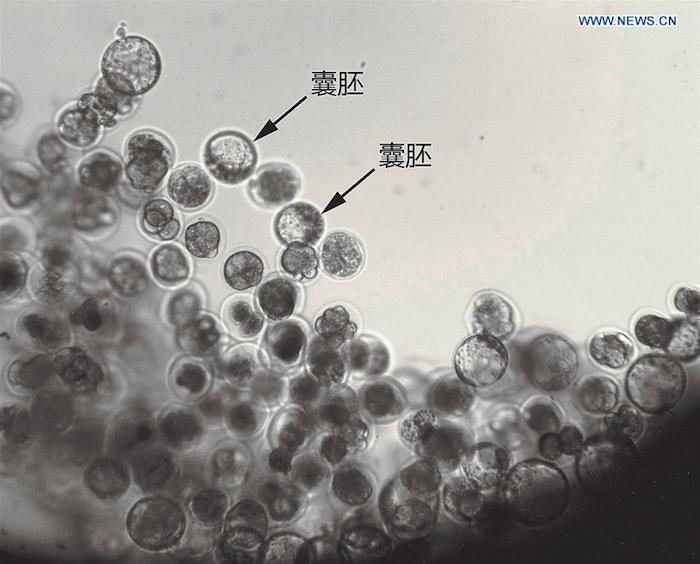
Photo provided by the Institute of Zoology, Chinese Academy of Sciences, shows the blastocysts developed from cells 80 hours after the mouse embryos were launched into space by the satellite, SJ-10. Over 6,000 early-stage mouse embryos carried by China's retrievable scientific research satellite have developed in space, making it the world's first-ever successful test on mammal embryo development. (Xinhua)
Quelle: Xinhua
-
Update: 19.04.2016
.
Re-entry capsule of SJ-10 lands in N. China
SIZIWANG BANNER, Inner Mongolia, The re-entry capsule of China's first retrievable microgravity satellite, SJ-10, returned safely to Earth on Monday, marking a solid step forward in space science research and application.
The recoverable capsule from the research probe, launched on April 6, touched down at around 4:30 p.m. at the planned landing area in Siziwang Banner in north China's Inner Mongolia Autonomous Region, retrievers said.
The capsule was transferred to the China Academy of Space Technology (CAST), which will hand over the equipment aboard the capsule to the Chinese Academy of Sciences (CAS) for further analysis and assessment.
The re-entry capsule separated from the orbital module of the probe about 15 minutes before its landing. The latter will remain in orbit before burning away.
It is the 24th retrievable satellite China has successfully recovered. The landing also marked the first time such a satellite has been recovered in Siziwang Banner.
During its 12-day journey in space, 19 experiments on microgravity and life sciences were carried out on board.
The experiments included one on the early development of mouse embryos in microgravity to shed light on human reproduction in space, and another on space radiation's effect on the genetic stability of fruit flies and rat cells.
Zhao Huiguang, chief architect of of the SJ-10, said the move forecast a new "spring" for the nation's retrievable satellites project.
SCIENTIFIC EXPERIMENTS
For the former experiment, the probe carried over 6,000 mouse embryos in a self-sufficient chamber the size of a microwave oven, according to the CAS.
According to the pictures sent back from a high-resolution camera, the 600 embryos, which were put under the camera, developed from the 2-cell stage, an early-on embryonic cleavage stage, to blastocyst, the stage where noticeable cell differentiation occurs, around 72 hours after SJ-10's launch. The timing was largely in line with embryonic development on Earth, according to CAS.
This is the first reported successful development in mammalian embryos in space in the history of science.
The 15 pieces of equipment which carried 11 experiments loaded on the capsule were in good condition after experiencing the harsh space environment and the return trip.
The probe, which focuses on energy, agriculture, health, will give a boost to the basic research on bio-engineering, new materials and life sciences, in addition to pushing forward the development of China's research on microgravity and space life sciences.
SATELLITE TECHNOLOGIES
The success of the SJ-10 mission helped verify a series of core technologies of the retrievable satellites, broadening the way for such satellites to expand its role in space science, according to Zhao.
Tang Bochang, general designer of the SJ-10 mission who has long been committed to retrievable satellite development, said that with improved carrying and supporting capabilities and microgravity environment, the SJ-10 model will become China's new generation of scientific experiment platform featuring safer retrieving, capability for medium and long-term on-orbit experiments, greater flexibility and lower cost.
Tang said Chinese scientists will move on to develop the retrievable spacecraft to achieve better performance in energy, control, data management, structure and thermal control.
Qiu Jiawen, chief commander of SJ-10, said that unlike its predecessors, the landing area for SJ-10 was designated in Siziwang Banner, out of consideration of easier recovery and smaller risk for residents' safety.
China is the world's third country to obtain the retrievable satellites technology. Over the last 40 years, China has developed three generations of retrievable satellites in six models for land survey, surveying and mapping, space breeding and other uses.
"Techniques such as thermal protection during reentry, posture control, and soft landing for recovery are still exclusively monopolized by China and very few other countries," Tang said.
Zhao said retrievable satellite has its unique advantages as a space scientific experiment platform.
Before SJ-10, China has used such spacecraft to complete at least 13 space life science experiments, seven experiments for space material processing as well as those regarding space microgravity measuring, space radiation dose measuring and space cell culture.
Quelle: Xinhua
5055 Views
